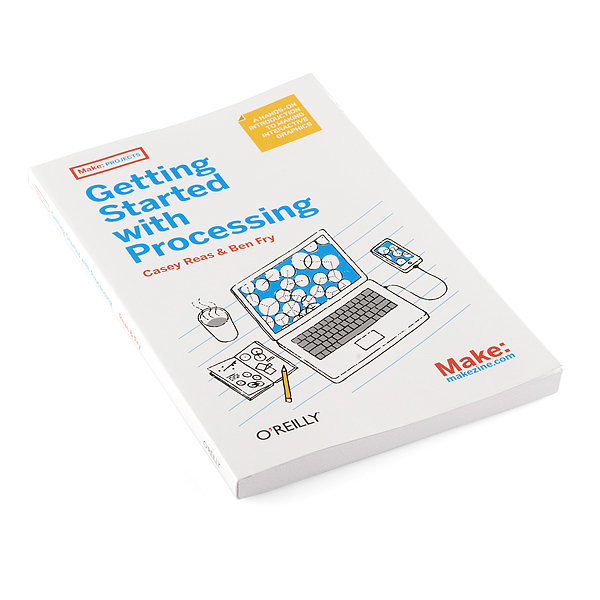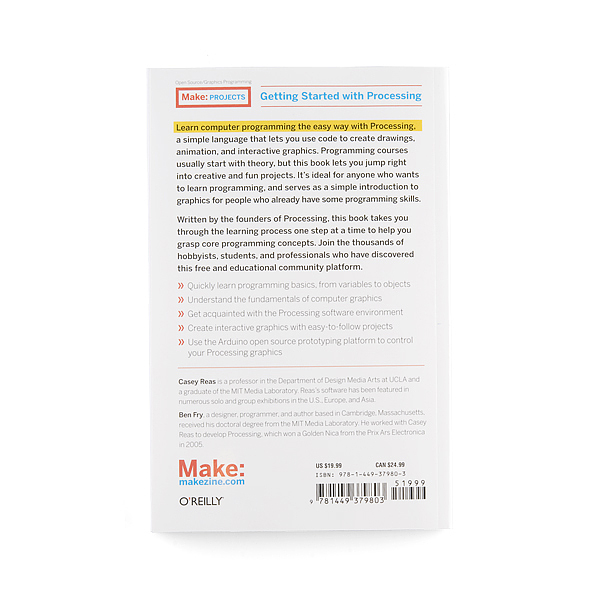Getting Started with Processing
Learn computer programming the easy way with Processing, a simple language that lets you use code to create drawings, animation, and interactive graphics. Programming courses usually start with theory, but this book lets you jump right into creative and fun projects. It's ideal for anyone who wants to learn basic programming, and serves as a simple introduction to graphics for people with some programming skills.
Written by the founders of Processing, this book takes you through the learning process one step at a time to help you grasp core programming concepts. You'll learn how to sketch with code -- creating a program with one a line of code, observing the result, and then adding to it. Join the thousands of hobbyists, students, and professionals who have discovered this free and educational community platform.
Info:
- Author: Casey Reas & Ben Fry
- Publisher: O'Reilly Media / Make Meda
- Paperback: 210 pages
- ISBN 10: 1-4493-7980-X
- ISBN 13: 978-1-4493-7980-3
Getting Started with Processing Product Help and Resources
Core Skill: Programming
If a board needs code or communicates somehow, you're going to need to know how to program or interface with it. The programming skill is all about communication and code.
Skill Level: Competent - The toolchain for programming is a bit more complex and will examples may not be explicitly provided for you. You will be required to have a fundamental knowledge of programming and be required to provide your own code. You may need to modify existing libraries or code to work with your specific hardware. Sensor and hardware interfaces will be SPI or I2C.
See all skill levels
Comments
Looking for answers to technical questions?
We welcome your comments and suggestions below. However, if you are looking for solutions to technical questions please see our Technical Assistance page.
Customer Reviews
No reviews yet.




read-only? I can't write in the margins?
Don't you mean 'sketch' in the margins?
I think you have to set the fuse-bits. Make sure you read the specs first, otherwise you could brick the whole thing!
;-> (cjh)
It's still technically a form of "volatile" memory.
(Sorry, I couldn't resist.)
C'mon SFE, no dimensioned sketches included?
DOES EAGLE HAVE THIS PART IN IT'S LIBRARY?!
Nice!
No, it's not in the Eagle library, but we are working on getting a breakout board for it.
Three bullets only a nerd could love
what data encoding system does this use?
It's a Standard American Spelling System -SASS; the pictures are in RMC encoding (red-magencta-cyan).
I'm having some trouble with the pull-up resistors on page 17, they seem to be preventing the Rx from receiving any serial data. (Roflcopters)
No pullups are required. Just use the standard optical reading interface. Optical correction may be needed depending on the age of your microcontroller.
lol I like the sense of humor with the features
Unfortunately not without optional accessories. However many sites sell the equipment to modify the pages for read/write.